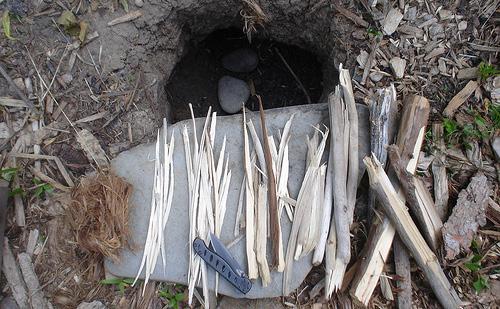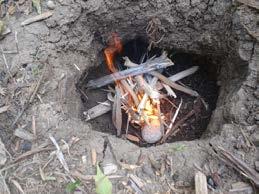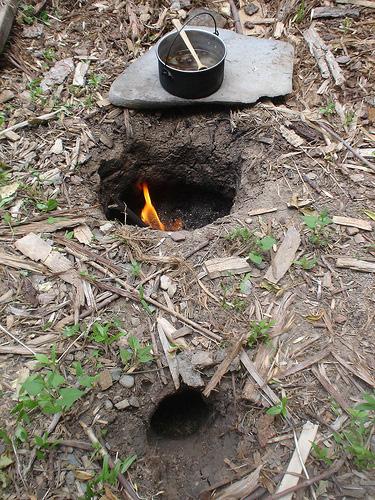
2 minute read
Get more heat from a Dakota fire
ALLEN MACARTNEY GET MORE HEAT FROM A DAKOTA FIRE Backwoods thermodynamics from its inventors
North American Aboriginal People built a “Dakota fire” when they wanted to minimize the smoky fingerprint of their campfire, and also when fuel was scarce and the wind was high. This kind of fire is also an excellent survival tool because it focuses all heat in one direction – straight up – making cooking easier.
Advertisement
Simply put, it’s a fire in a hole in the ground with another hole at the bottom feeding in fresh oxygen.
As hot air from the fire exits through the top exhaust hole it creates suction that draws fresh air in through the smaller air tunnel hole, directly onto the fire base. Creating a self-feeding cycle, it focuses fresh oxygen to continually aid combustion. Fires don’t get much more efficient than this.
The hotter the fire, the more the suction, the more the suction, the hotter the fire ….
A Dakota fire is not for just any camping experience. It requires an environmentally minded camper who will avoid digging a Dakota fire in campgrounds, heavily used canoe-camping sites, or areas with rich nutrient-bearing soil. It is built clear of tree roots in a gravel or clay soil if possible, because it will hold its shape when heated, and fire won’t harm the nutrients found in rich loam.
Start with a hand trowel and cut out a grasssoil plug from the ground and set it aside for when you leave the campsite. Then dig a hole about 30 centimetres across and 30 centimetres deep. Enlarge the bottom of the hole slightly to accommodate kindling and larger



pieces of firewood.
Next, dig a 15-centimetre air hole starting about 30 centimetres from the fire hole and aimed at it. Angle it down so it ends at the bottom of the fire hole. Ideally the air hole should be upwind of the fire hole.
Then partly fill the fire hole with kindling, and light it. Add sticks and wood to fuel the flames. Then place two pieces of thick wood at the top of the fire hole at ground level to support your pot or frying pan.
When the cooking is over and before leaving the campsite, drown any smoldering embers in the hole, and stir them. Then drown the ash again. Then fill in both the fire and exhaust holes with the gravel/clay/sand mixture you dug out, and replace the grass-soil plug to return the site to its original condition.
Every seasoned camper should have Dakota fire knowledge as part of their mental equip- ment. As a survival tool, it produces a hotter fire with less wood. This fuel efficiency means less time looking for firewood and more time staying warm.













